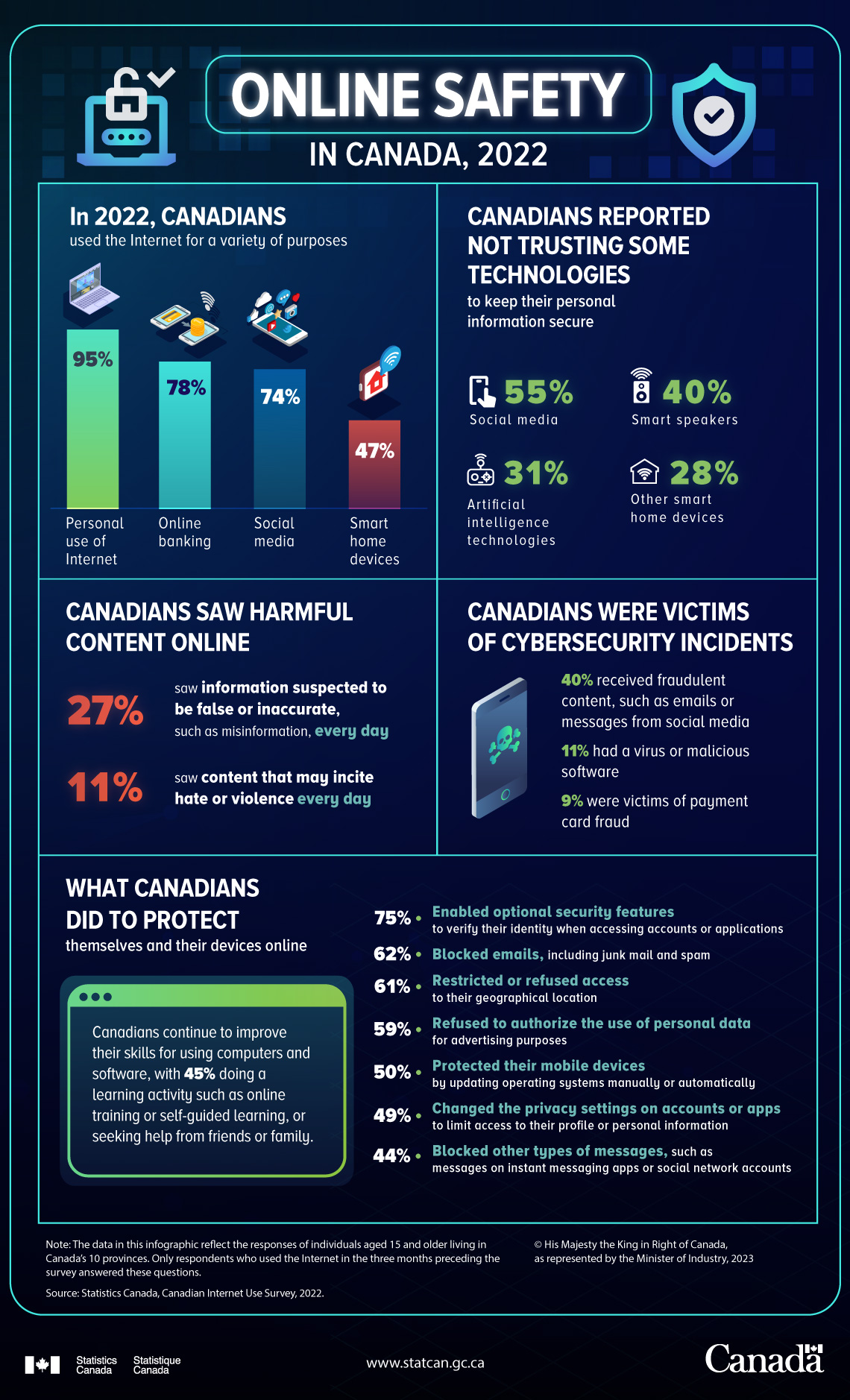Online safety in Canada, 2022

Description: Online safety in Canada, 2022
| Percent | |
|---|---|
| Personal use of Internet | 95 |
| Online banking | 78 |
| Social media | 74 |
| Smart home devices | 47 |
| Percent | |
|---|---|
| Social media | 55 |
| Smart speakers | 40 |
| Artificial intelligence technologies | 31 |
| Other smart home devices | 28 |
Canadians saw harmful content online
27% saw information suspected to be false or inaccurate, such as misinformation, every day
11% saw content that may incite hate or violence every day
Canadians were victims of cybersecurity incidents
40% received fraudulent content, such as emails or messages from social media
11% had a virus or malicious software
9% were victims of payment card fraud
| Percent | |
|---|---|
| Enabled optional security features to verify their identity when accessing accounts or applications | 75 |
| Blocked emails, including junk mail and spam | 62 |
| Restricted or refused access to their geographical location | 61 |
| Refused to authorize the use of personal data for advertising purposes | 59 |
| Protected their mobile devices by updating operating systems manually or automatically | 50 |
| Changed the privacy settings on accounts or apps to limit access to their profile or personal information | 49 |
| Blocked other types of messages, such as on instant messaging apps or social network accounts | 44 |
Canadians continue to improve their skills for using computers and software, with 45% doing a learning activity such as online training or self-guided learning, or seeking help from friends or family.
Note: The data in this infographic reflect the responses of individuals aged 15 and older living in Canada’s 10 provinces.
Only respondents who used the Internet in the three months preceding the survey answered these questions.
Source: Statistics Canada, Canadian Internet Use Survey, 2022.
- Date modified: